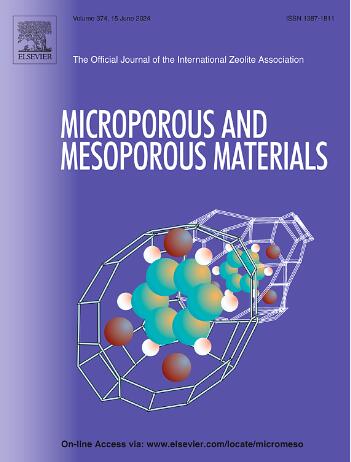Advances in mesoporous silica nanoparticles as carriers for drug delivery and other biomedical applications
IF 4.8
3区 材料科学
Q1 CHEMISTRY, APPLIED
引用次数: 0
Abstract
Mesoporous silica nanoparticles (MSNs) are significant porous materials that have gained increasing interest for biomedical applications due to their appealing physicochemical properties and advantageous morphology. Their tailored mesoporous structure and porosity, thermal stability, high surface area, and framework composition make them an attractive drug delivery platform for treating a range of diseases, offering significant advantages over traditional drug nanocarriers. A variety of small molecules and macromolecules, including proteins, DNA, RNA, genes, and antigens, have been successfully loaded into engineered MSNs-based systems. The chemical flexibility of MSNs was exploited to impart new functionality to these nanoparticles, with the objective of enhancing the loading of bioactive substances and their controlled and targeted release, as well as improving their biocompatibility and bioavailability. These developments have resulted in the creation of smart carriers, such as stimuli-reactive drug delivery systems, which demonstrate remarkable performance in both in vivo and in vitro environments. This review provides an overview of the different types of MSNs and the synthesis methods used for their fabrication. The main drug loading approaches will be discussed, with an emphasis on the recent developments in stimuli-responsive drug delivery systems that can specifically respond to physical and chemical changes in their environment. Additionally, current ongoing research and future trends in biomedical applications of MSNs, including tissue engineering, imaging, biosensing, and theragnostic will be highlighted.

介孔二氧化硅纳米颗粒作为药物传递和其他生物医学应用载体的研究进展
介孔二氧化硅纳米颗粒(MSNs)是一种重要的多孔材料,由于其吸引人的物理化学性质和有利的形态,在生物医学应用中获得了越来越多的兴趣。它们量身定制的介孔结构和孔隙度、热稳定性、高表面积和框架组成使它们成为治疗一系列疾病的有吸引力的药物传递平台,与传统的药物纳米载体相比具有显着优势。各种小分子和大分子,包括蛋白质、DNA、RNA、基因和抗原,已经成功地装载到基于msn的工程系统中。利用msn的化学柔韧性赋予这些纳米颗粒新的功能,目的是增强生物活性物质的负载及其控制和靶向释放,以及提高它们的生物相容性和生物利用度。这些发展导致了智能载体的产生,如刺激反应性药物传递系统,在体内和体外环境中都表现出卓越的性能。本文综述了不同类型的msn及其制备方法。将讨论主要的药物装载方法,重点是刺激反应性药物递送系统的最新发展,该系统可以对其环境中的物理和化学变化作出具体反应。此外,目前正在进行的研究和未来的趋势,在生物医学应用的msn,包括组织工程,成像,生物传感和诊断将被强调。
本文章由计算机程序翻译,如有差异,请以英文原文为准。
求助全文
约1分钟内获得全文
求助全文
来源期刊

Microporous and Mesoporous Materials
化学-材料科学:综合
CiteScore
10.70
自引率
5.80%
发文量
649
审稿时长
26 days
期刊介绍:
Microporous and Mesoporous Materials covers novel and significant aspects of porous solids classified as either microporous (pore size up to 2 nm) or mesoporous (pore size 2 to 50 nm). The porosity should have a specific impact on the material properties or application. Typical examples are zeolites and zeolite-like materials, pillared materials, clathrasils and clathrates, carbon molecular sieves, ordered mesoporous materials, organic/inorganic porous hybrid materials, or porous metal oxides. Both natural and synthetic porous materials are within the scope of the journal.
Topics which are particularly of interest include:
All aspects of natural microporous and mesoporous solids
The synthesis of crystalline or amorphous porous materials
The physico-chemical characterization of microporous and mesoporous solids, especially spectroscopic and microscopic
The modification of microporous and mesoporous solids, for example by ion exchange or solid-state reactions
All topics related to diffusion of mobile species in the pores of microporous and mesoporous materials
Adsorption (and other separation techniques) using microporous or mesoporous adsorbents
Catalysis by microporous and mesoporous materials
Host/guest interactions
Theoretical chemistry and modelling of host/guest interactions
All topics related to the application of microporous and mesoporous materials in industrial catalysis, separation technology, environmental protection, electrochemistry, membranes, sensors, optical devices, etc.
 求助内容:
求助内容: 应助结果提醒方式:
应助结果提醒方式:


